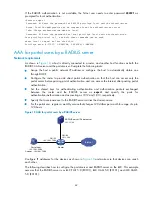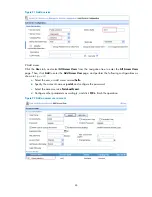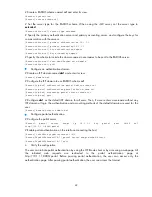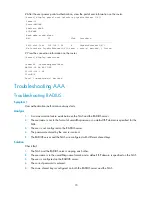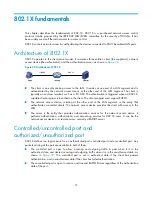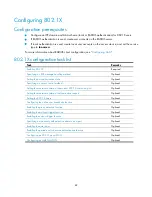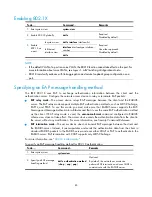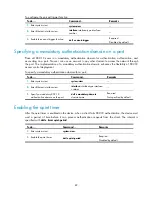
75
Figure 32
Encapsulation format of the EAP-Message attribute
Message-Authenticator
shows the encapsulation format of the Message-Authenticator attribute. The Message-
Authenticator attribute is used to prevent access requests from being snooped during EAP authentication.
It must be included in any packet with the EAP-Message attribute, and it is used to check packet
integrity. If the integrity checksum of a packet calculated by the receiver is not consistent with the
Message-Authenticator attribute value in the packet, the packet is considered invalid and is discarded.
Figure 33
Encapsulation format of the Message-Authenticator attribute
Initiating 802.1X authentication
Either the 802.1X client or the access device can initiate 802.1X authentication.
802.1X client as the initiator
The client sends an EAPOL-Start packet to the access device to initiate 802.1X authentication. The
destination MAC address of the packet can be the IEEE 802.1X specified multicast address 01-80-C2-
00-00-03 or the broadcast MAC address. If any intermediate device between the client and the server
does not support this multicast address, you must use an 802.1X client (the HP iNode 802.1X client, for
example) that can send broadcast EAPOL-Start packets.
Access device as the initiator
The access device initiates authentication if a client (the 802.1X client available with Windows XP, for
example) cannot send EAPOL-Start packets.
The access device supports the following modes:
•
Multicast trigger mode
—The access device multicasts EAP-Request/Identify packets periodically
(every 30 seconds by default) to initiate 802.1X authentication.
•
Unicast trigger mode
—Upon receiving a frame with the source MAC address not in the MAC
address table, the access device sends an EAP-Request/Identify packet out of the receiving port to
the unknown MAC address. It retransmits the packet if no response has been received within a
configured time interval.


